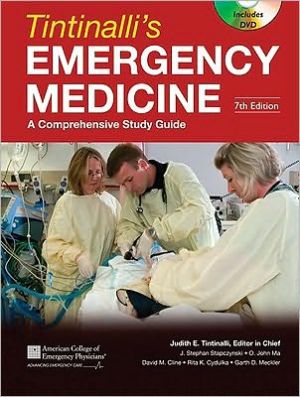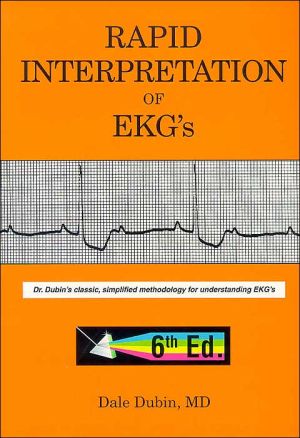Fundamentals of Biostatistics
FUNDAMENTALS OF BIOSTATISTICS leads you through the methods, techniques, and computations necessary for success in the medical field. Every new concept is developed systematically through completely worked out examples from current medical research problems.\ \ \ Includes case study on lead exposure in children/outlier detection techniques/one-way ANOVA random effects model/etc.\
Search in google:
Developed at Harvard Medical School, this textbook introduces the basic methods of statistical inference, and the principles of probability, hypothesis testing, nonparametric statistics, regression analysis, and the analysis of variance. The sixth edition adds sections on Bayesian inference, the false discovery rate, missing data methods, and the proportional hazards model. The CD-ROM contains data sets and practice problems. Annotation ©2004 Book News, Inc., Portland, OR Booknews An introductory biostatistics text for upper-level undergraduate or graduate students interested in medicine or other health-related fields. The amount of mathematical formulation is minimized, but important concepts are given complete explanations, with worked examples from current medical research problems. Assumes no previous background in statistics, only a knowledge of algebra. Includes a data disk. This fifth edition contains 260 new exercises, including exercises based on computer simulations, and incorporates modern computer graphics and statistical software. The author is affiliated with Harvard University. Annotation c. Book News, Inc., Portland, OR (booknews.com)
\ \ Chapter 1: General Overview\ Statistics is the science whereby inferences are made about specific random phenomena on the basis of relatively limited sample material. The field of statistics can be subdivided into two main areas: mathematical statistics and applied statistics. Mathematical statistics concerns the development of new methods of statistical inference and requires detailed knowledge of abstract mathematics for its implementation. Applied statistics concerns the application of the methods of mathematical statistics to specific subject areas, such as economics, psychology, and public health. Biostatistics is the branch of applied statistics that concerns the application of statistical methods to medical and biological problems.\ A good way to learn about biostatistics and its role in the research process is to follow the flow of a research study from its inception at the planning stage to its completion, which usually occurs when a manuscript reporting the results of the study is published. As an example, I will describe one such study in which I participated.\ A friend called one morning and in the course of our conversation mentioned that he had recently used a new, automated blood-pressure device of the type seen in many banks, hotels, and department stores. The machine had read his average diastolic blood pressure on several occasions as 115 mm Hg; the highest reading was 130 mm. Hg. I was horrified to hear of his experience, since if these readings were true, my friend might be in imminent danger of having a stroke or developing some other serious cardiovascular disease. I referred him to a clinical colleague of mine who, using a standard blood-pressure cuff, measured my friend's diastolic blood pressure as 90 mm Hg. The contrast in the readings aroused my interest, and I began to jot down the readings on the digital display every time I passed the machine at my local bank. I got the distinct impression that a large percentage of the reported readings were in the hypertensive range. Although one would expect that hypertensives would be more likely to use such a machine, I still believed that blood-pressure readings obtained with the machine might not be comparable with those obtained using standard methods of blood-pressure measurement. I spoke to Dr. B. Frank Polk about my suspicion and succeeded in interesting him in a small-scale evaluation of such machines. We decided to send a human observer who was well trained in blood-pressure measurement techniques to several of these machines. He would offer to pay subjects 500 for the cost of using the machine if they would agree to fill out a short questionnaire and have their blood pressure measured by both a human observer and the machine.\ At this stage we had to make several important decisions, each of which would prove vital to the success of the study. The decisions were based on the following questions:\ (1) How many machines should we test?\ (2) How many people should we test at each machine?\ (3) In what order should the measurements be taken-should the human observer or the machine be used first? Ideally, we would have preferred to avoid this problem by taking both the human and machine readings simultaneously, but this procedure was logistically impossible.\ (4) What other data should we collect on the questionnaire that might influence the comparison between methods?\ (5) How should the data be recorded to facilitate their computerization at a later date?\ (6) How should the accuracy of the computerized data be checked?\ We resolved these problems as follows:\ (1) and (2) We decided to test more than one machine (four to be exact), since we were not sure if the machines were comparable in quality. However, we wanted to sample enough subjects from each machine so that we would have an accurate comparison of the standard and automated methods for each machine. We tried to predict how large a discrepancy there might be between the two methods. Using the methods of sample-size determination discussed in this book, we calculated that we would need 100 subjects at each site to have an accurate comparison.\ (3) We then had to decide in what order the measurements should be taken for each person. According to some reports, one problem that occurs with repeated bloodpressure measurements is that people tense up at the initial measurement, yielding higher blood pressure than at subsequent repeated measurements. Thus, we would not always want to use the automated or manual method first, since the effect of the method would get confused with the order-of-measurement effect. A conventional technique that we used here was to randomize the order in which the measurements were taken, so that for any person it was equally likely that the machine or the human observer would take the first measurement. This random pattern could be implemented by flipping a coin or, more likely, by using a table of random numbers as appears in Table 4 of the Appendix.\ (4) We felt that the major extraneous factor that might influence the results would be body size, since we might have more difficulty getting accurate readings from people with fatter arms than from those with leaner arms. We also wanted to get some idea of the type of people who use these machines; so we asked questions about age, sex, and previous hypertensive history.\ (5) To record the data, we developed a coding form that could be tilled out on site and from which data could be easily entered on a computer terminal for subsequent analysis. Each person in the study was assigned an identification (ID) number by which the computer could uniquely identify that person. The data on the coding forms were then keyed and verified. That is, the same form was entered twice, and a comparison was made between the two records to make sure they were the same. If the records were not the same, the form was reentered. (6) After data entry we ran some editing programs to ensure that the data were accurate. Checking each item on each form was impossible because of the large amount of data. Alternatively, we checked that the values for individual variables were within specified ranges and printed out aberrant values for manual checking. For example, we checked that all blood-pressure readings were at least 50 and no more than 300 and printed out all readings that fell outside this range.\ After completing the data-collection, data-entry, and data-editing phases, we were ready to look at the results of the study. The first step in this process is to get a general feel for the data by summarizing the information in the form of several descriptive...
Ch. 1General Overview1Ch. 2Descriptive Statistics5Ch. 3Probability43Ch. 4Discrete Probability Distributions71Ch. 5Continuous Probability Distributions105Ch. 6Estimation141Ch. 7Hypothesis Testing: One-Sample Inference191Ch. 8Hypothesis Testing: Two-Sample Inference251Ch. 9Multisample Inference299Ch. 10Hypothesis Testing: Categorical Data345Ch. 11Regression and Correlation Methods443Ch. 12Nonparametric Methods551Ch. 13Hypothesis Testing: Person-Time Data585Tables633Answers to Selected Problems663Flowchart for Appropriate Methods of Statistical Inference669Index of Data Sets676Index677
\ BooknewsAn introductory biostatistics text for upper-level undergraduate or graduate students interested in medicine or other health-related fields. The amount of mathematical formulation is minimized, but important concepts are given complete explanations, with worked examples from current medical research problems. Assumes no previous background in statistics, only a knowledge of algebra. Includes a data disk. This fifth edition contains 260 new exercises, including exercises based on computer simulations, and incorporates modern computer graphics and statistical software. The author is affiliated with Harvard University. Annotation c. Book News, Inc., Portland, OR (booknews.com)\ \








